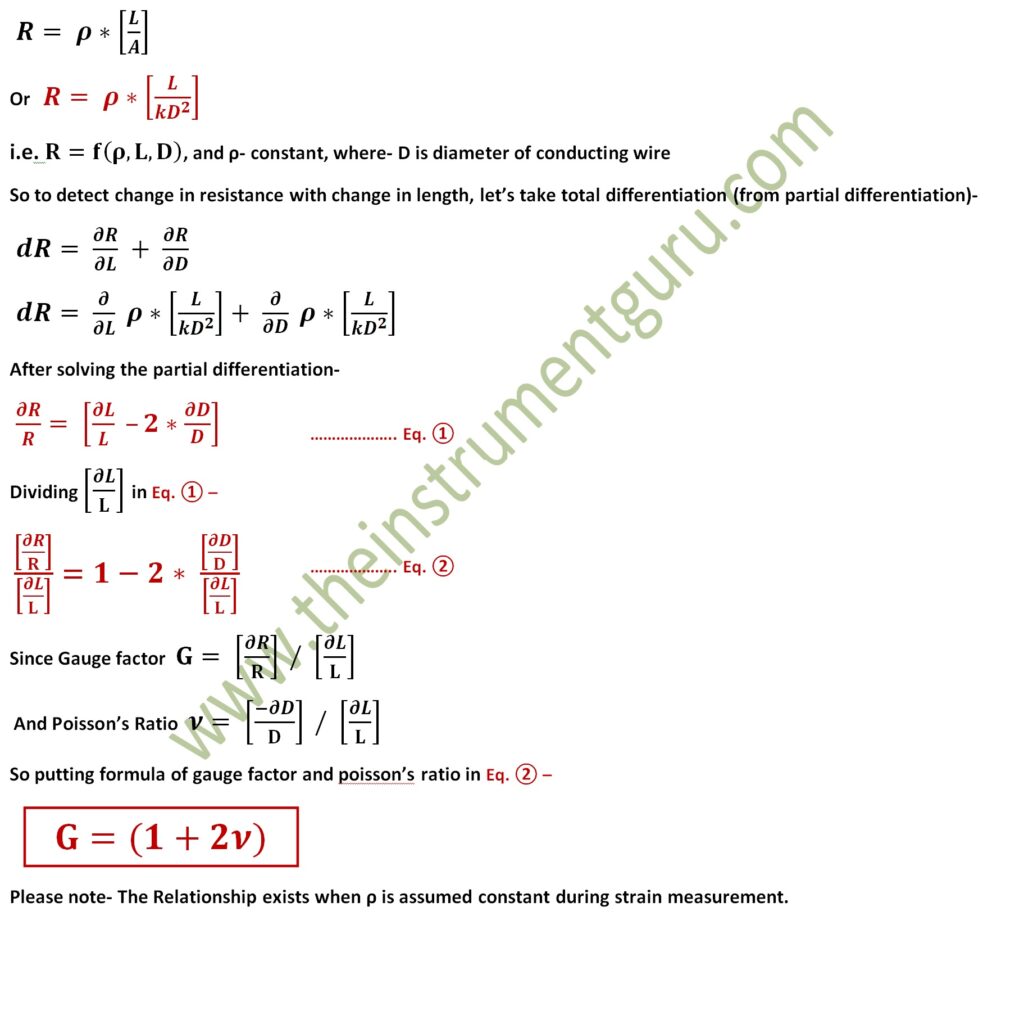Table of Contents
Gauge Factor is defined as the ratio of relative change in electrical resistance to the mechanical strain. Here relative change in resistance is defined as the ratio of change in resistance produced due to strain to its original resistance (without strained). It is also referred as Strain factor of a strain gauge.
According to the definition, when applied force in a solid bar of length (L) produces change in length (ΔL) which results in gauge resistance change (ΔR) from its original resistance (R), then the Gauge Factor can be mathematically expressed as-

This factor varies with variation of material. From the formula it is clear that higher the change in resistance produced by a smaller change in length will results into high gauge factor. And thus such gauges can be used to detect extremely small strain also.





Important Note-
Gauge factor mainly depends on the following properties-
- Material used to construct strain gauge
- The configuration of strain gauge wire
- The Mechanical Load
Piezoresistive effect
“When mechanical strain is applied on a metal or a semiconductor, the electrical resistivity of the material changes, the property is termed as piezoresistive effect.”
The piezoresistive effect is not same as piezoelectric effect. In piezo electric effect, certain crystal (called as piezo electric crystal) has ability to generate an electric charge or electric potential across its specific surface in response to applied mechanical stress. This phenomenon is also reversible. While in Piezoresistive effect, there will be only change in electrical resistivity and/or electrical resistance of a metals or semiconductor.
Poisson’s Ratio-
When force is applied to a solid bar longitudinally, the length (L) of bar is elongated by ΔL and as well as its perpendicular dimensions (originally D) contracts by ΔD. Here the strain generated in perpendicular direction is referred as lateral strain.





The ratio of lateral strain to longitudinal strain is a constant for a material (of bar) and is denoted by Poisson’s ratio (ν).





Relation Between gauge factor and Poisson’s ratio
Since we know that change in electrical resistance is function of strain and electrical resistance (R) of a conductor is proportional to the length (l ) of the conductor and inversely proportional to the cross section area (A) of the conductor i.e.




